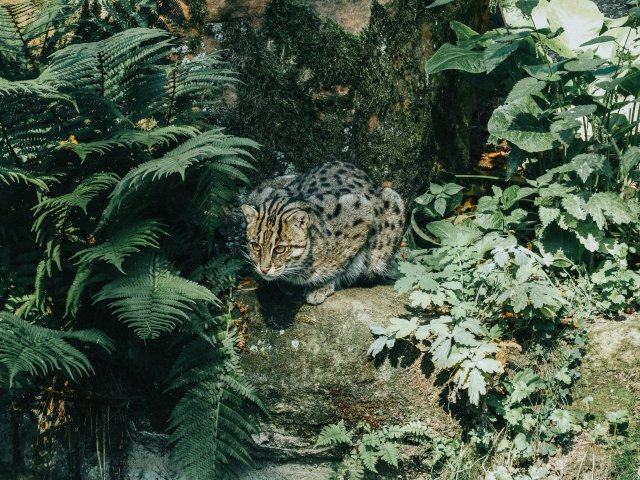10 Fascinating Facts About Fishing Cats
Fishing Cats
 Fishing cats are a unique and intriguing species that inhabit wetland areas across Southeast Asia. These feline creatures have adapted to their aquatic environment and possess remarkable characteristics that set them apart from other wild cats. In this article, we will explore ten fascinating facts about fishing cats, shedding light on their behavior, habitat, and conservation efforts.
Fishing cats are a unique and intriguing species that inhabit wetland areas across Southeast Asia. These feline creatures have adapted to their aquatic environment and possess remarkable characteristics that set them apart from other wild cats. In this article, we will explore ten fascinating facts about fishing cats, shedding light on their behavior, habitat, and conservation efforts.
1. Unique Hunting Technique
Fishing cats are excellent swimmers and have developed a distinctive hunting technique. They are known to dive into the water, using their partially webbed paws to catch fish, frogs, and even small crustaceans. Their ability to swim and dive makes them one of the few cat species that are well-adapted to an aquatic lifestyle.
2. Adaptations for Aquatic Life
Unlike most cats, fishing cats have a water-resistant coat that helps them stay dry while swimming. Their fur is longer and coarser than that of other feline species, providing insulation and buoyancy in the water. Additionally, their partially webbed toes aid in swimming and navigating through marshy terrain.
3. Habitat and Range
Fishing cats primarily inhabit wetland areas, including mangroves, swamps, and marshes. They can be found in countries such as India, Sri Lanka, Nepal, Bangladesh, Thailand, and Malaysia. These cats are highly adaptable and can survive in both freshwater and saltwater environments.
4. Nocturnal Behavior
Fishing cats are primarily nocturnal, meaning they are most active during the night. This behavior allows them to avoid human activity and hunt undisturbed. Their keen eyesight and acute hearing help them navigate through the darkness and locate prey in low-light conditions.
5. Vocalizations
Similar to domestic cats, fishing cats communicate through a range of vocalizations. They produce sounds such as meows, growls, hisses, and purrs to express various emotions and intentions. These vocalizations play a crucial role in their social interactions and mating rituals.
6. Threats and Conservation
Fishing cats face numerous threats to their survival, primarily due to habitat loss and degradation. Wetland destruction, pollution, and human encroachment on their habitats have significantly impacted their populations. Conservation efforts are underway to protect these endangered cats, including the establishment of protected areas and raising awareness about their importance.
7. Elusive Nature
Fishing cats are elusive creatures that are rarely spotted in the wild. Their secretive behavior and excellent camouflage make them difficult to observe and study. Researchers often rely on camera traps and remote sensing techniques to gather information about their population size and behavior.
8. Endangered Status
Due to habitat loss and poaching, fishing cats are listed as an endangered species by the International Union for Conservation of Nature (IUCN). Their population has significantly declined over the years, and urgent conservation measures are necessary to ensure their survival.
9. Conservation Success Stories
Despite the challenges they face, there have been some success stories in fishing cat conservation. In Cambodia, the establishment of the Peam Krasop Wildlife Sanctuary has provided a safe haven for these cats. Additionally, community-based conservation initiatives in Bangladesh have helped protect their habitats and raise awareness among local communities.
10. Importance of Fishing Cats
Fishing cats play a vital role in maintaining the ecological balance of wetland ecosystems. As top predators, they help control the populations of their prey species, preventing overpopulation and maintaining the health of the ecosystem. Their conservation is not only crucial for their survival but also for the overall well-being of wetland habitats.
Summary
Fishing cats are fascinating creatures with unique adaptations and behaviors that allow them to thrive in wetland environments. Their ability to swim, dive, and catch fish sets them apart from other wild cats. However, their populations are under threat due to habitat loss and degradation. Conservation efforts are essential to protect these endangered cats and preserve the delicate balance of wetland ecosystems.
Read More About The Fishing Cat From Wikipedia



